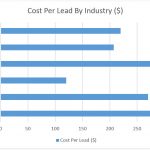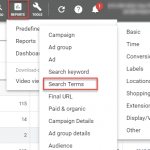
Pay Per Click (PPC) KPI #2
Customer Lifetime Value (CLV)
- Some leads may not buy right away or could be in ‘research’ mode, so follow up is needed to nurture them to cross the line to a sale.
- As trust with new clients is built, they can buy multiple times and then they share their positive experience with other potential new clients.
- New leads are also an opportunity to up-sell or cross-sell products and complimentary services. This tactic if properly handled could be perceived as adding more value to these new customers while increasing your initial basket size and overall CLV.
Furthermore, a benefit of a customer lifetime value strategy is client segmentation to focus on more profitable clients and targeting prospects that match the profile of those type of customers. Being mindful of this requires an appreciation that not all customers are equally important. Therefore, a CLV focused segmentation allows a firm to determine the most profitable group of customers, understand their common characteristics and focus more on them rather than on less profitable clients. Customer Lifetime Value applies well for relationship based businesses, especially those with customer contracts.
Keep in mind that a CLV analysis often times has to make several other simplifying assumptions to be aware of:
- Churn rate is the percentage of customers who end their relationship with a company in a given period. One minus the churn rate is the Retention rate. Typical CLV formulas incorporate either churn rate or retention rate, assuming that either rate is constant across the life of the customer relationship, which is not always the case.
- Retention cost is the amount of money a company has to spend in a given period to retain an existing customer as part of a Cost of Goods Sold (COGS). Retention costs include customer support, marketing, promos, discounting and so on.
- Period is the length of a customer relationship which is divided for analysis.
There are also other inputs to consider such as Cost Of Acquisition (COA). For example, if a new customer costs $50 to acquire and their lifetime value is $100, then the customer is judged to be profitable, and acquisition of additional similar customers is acceptable. Knowing this can lead to other operational benefits that could further improve business results such as:
- management of customer relationship as an asset
- encourages focus on the long-term value of customers instead of just acquiring “cheap” customers with low total revenue value
- optimal allocation of resources in order to achieve a maximum return
- an analytical basis for selecting ‘ideal’ customers
- creating customer specific communication strategies based on profiles
In summary, Customer Lifetime Value is a KPI to monitor when assessing a Pay Per Click campaign or any customer focused effort for business growth.





